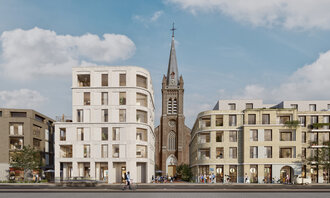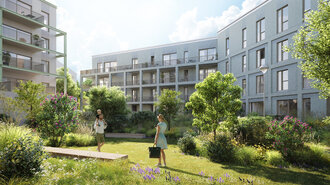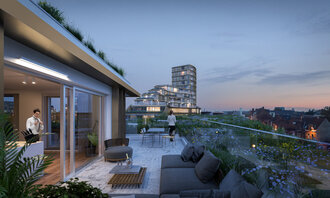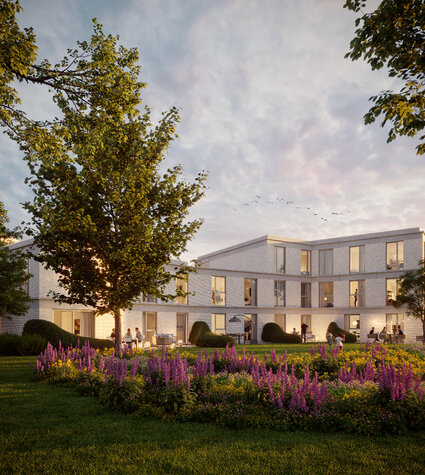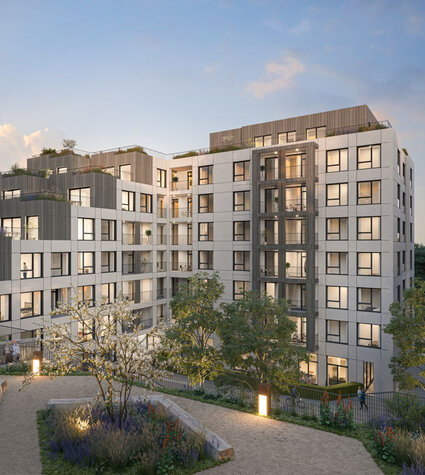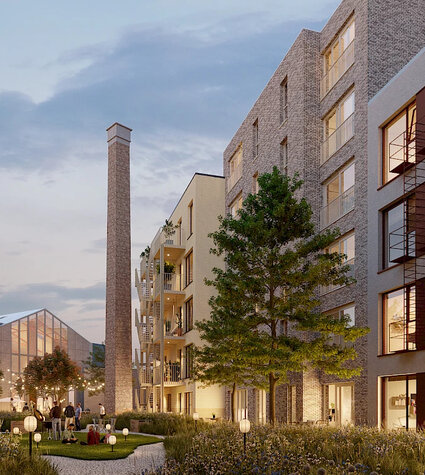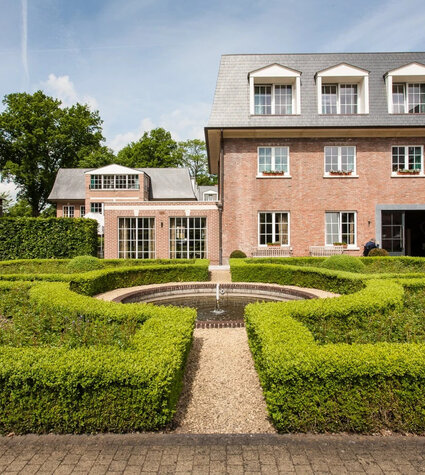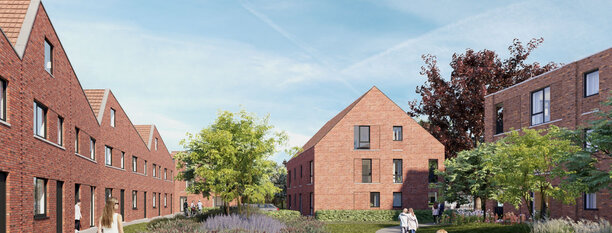
Smaller homes are the future

What is the cause of this trend toward smaller homes?
Matthieu Pacco: “Obviously, the cost is a major factor, but other social trends also play a role. Young people used to buy a house to spend the rest of their lives in. Nowadays this is much less the case. People tend to buy and sell real estate in line with the different stages of their lives. In addition, urban planning regulations impose optimal use of space. We have to use every square metre of land we pave as efficiently as possible.”
Sander Plets: “This trend is especially noticeable in inner-city areas, where the available land is scarce and prices of land are higher. But it’s also a general trend, which I think is partly driven by the fact that building and renovating are becoming increasingly expensive due to stricter energy requirements, for instance.”
Cedric Oliver: “I have been noticing this evolution my entire career. Over the past 20 years, prices have steadily increased. Whereas 85% of the Flemish people used to have their own house or flat, this figure is now consistently decreasing. As a result, the homes available on the market are becoming smaller, and this trend is expected to occur on the rental market as well. This is what ION is now responding to with the ION Residential Platform (IRP): a joint venture with Bouwinvest and CBRE Global Investment Partners, which will invest 280 million euro in the residential rental market.”
What does the increasing demand for smaller homes mean for ION projects?
Cedric Oliver: “Being developers, we have to take into account this evolution. Where service flats and student accommodations are concerned, we have been focusing on smaller private areas and large common areas for quite some time. Our project Flint in Leuven, for instance, not only consists of student rooms, but also features a communal kitchen and sanitary facilities, a fitness room, a study area, a courtyard garden and an outer garden. Projects like this are the precursors of the ideas we plan to implement in residential projects in the future. We have noticed that young people are rather receptive to these ideas. In order to make living affordable, they don’t necessarily need their own house with a fenced garden. That’s why we include collective green areas in our designs, for instance in our Nieuwland and Suikerpark projects. Communal indoor areas are also a possibility, like a common laundry room or a room to entertain friends or family.”
Sander Plets: “Burenberg, our latest project in Leuven, features a few co-living units. Each unit has ten private rooms, each with their own sanitary facilities. The large living area and kitchen are shared, as is the outdoor area. In addition, the residents share a fenced monastic garden with other people living in the building.”

Does the corona crisis have an impact on the trend toward smaller homes?

Sander Plets: “A high-quality, large outdoor area has most certainly gained importance compared to pre-covid times. That’s something we have noticed in our recent sales. We also see that collective outdoor areas are becoming increasingly important, especially in inner-city areas. Owners have a small private outdoor area, but also share a larger communal garden with a number of other residents.”
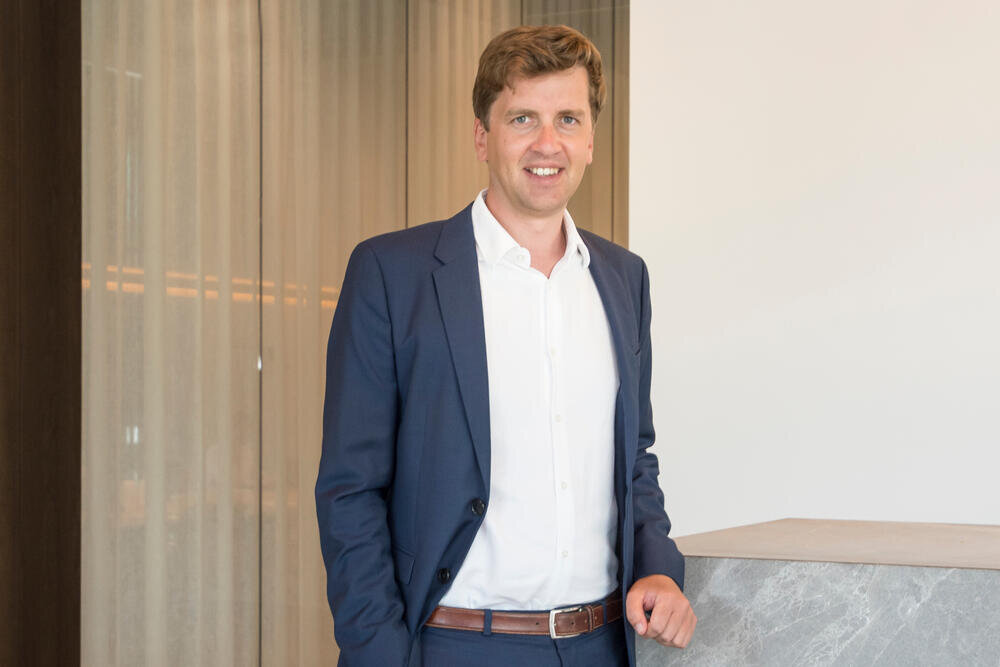
Matthieu Pacco: "The evolution toward an own house with shared outdoor areas and a more efficient use of green spaces by communities has been noticeable for a while. Just consider what has a bigger beneficial influence on the quality of life : 20 houses, each with their own 50m² garden, or 20 houses, each with their own 10m² garden and a collective 800 m² park garden? This is a simple example that clarifies a lot. On the other hand, one of the consequences of the corona crisis may be that the trend toward communal areas will no longer be as pronounced.”
More communal areas means less private space. What’s the role of a multifunctional interior in this respect?
Cedric Oliver: “Interior design and furniture adjust to the new trend. We first saw this at the coast, where real estate has always been more expensive, but now we are increasingly noticing it inland as well. Rooms are multifunctional, and so is the furniture: foldable tables or fold-down beds, to only name the most common pieces of furniture.”
Sander Plets: “It's certainly a benefit to have a multifunctional room in your home. For instance, you can combine a TV corner with a desk or with a play area for the children. It’s also interesting to have rooms that can be adjusted to the composition of family, for instance to create bedrooms for new family members or convert them into one large room after the children have left home.”
Are there specific factors that can make or break a small home?
Elke Deceuninck: “It’s important to focus on unity. The incidence of light is the first factor: the more light, the more spacious a home feels. In addition, it’s important that the different rooms are extensions of each other. To make that possible, it’s essential to have a view from one room into another and to make sure that the same materials are used in the different rooms. It’s also advisable to avoid small, closed spaces with little room for storage. In addition, valuable space can be gained by also using the outdoor area as an extension of the home.”
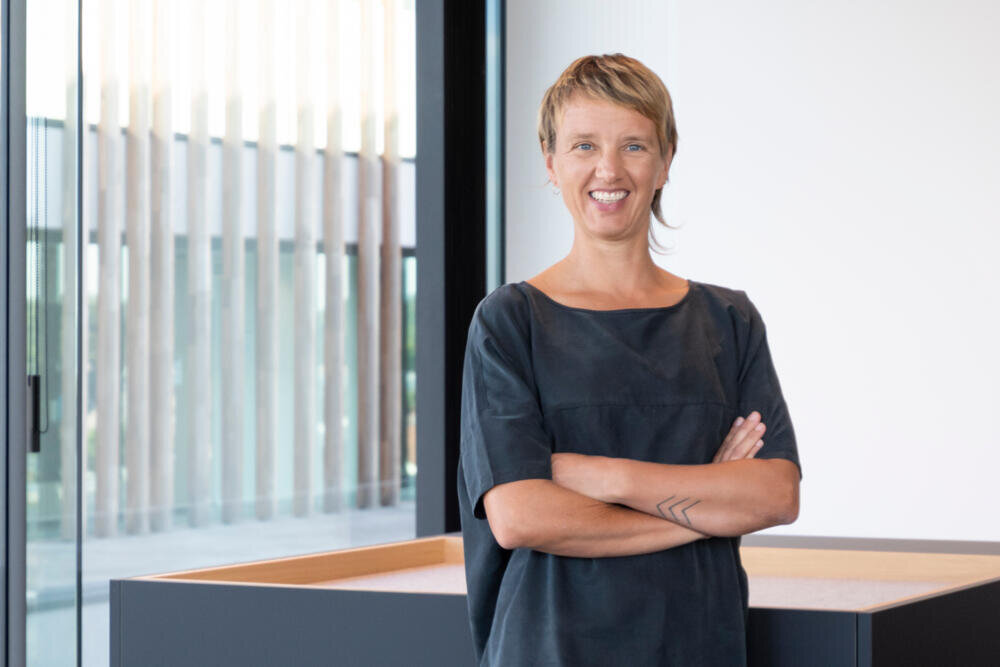
Which smart solutions are available as regards compact technologies?
Matthieu Pacco: “The main technology we use are heating grids. Providing collective heating not only saves costs, but space as well. A heat exchanger is a lot more compact that a traditional boiler. In this respect, I feel that our sector is seriously lagging behind the IT or automotive sector in terms of technological evolution and innovation. There are still a lot of possibilities for further development in the future.”
Sander Plets: “If we work with a heating grid, floor heating will also be installed in most cases. In addition to the increased comfort offered by floor heating, the absence of radiators offers additional possibilities for the optimal use of space in the home. It’s a durable and energy-efficient system that is an ideal solution for smaller homes.”
